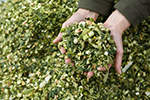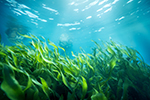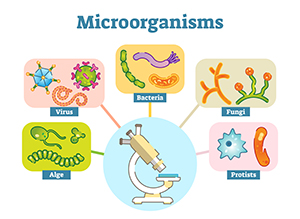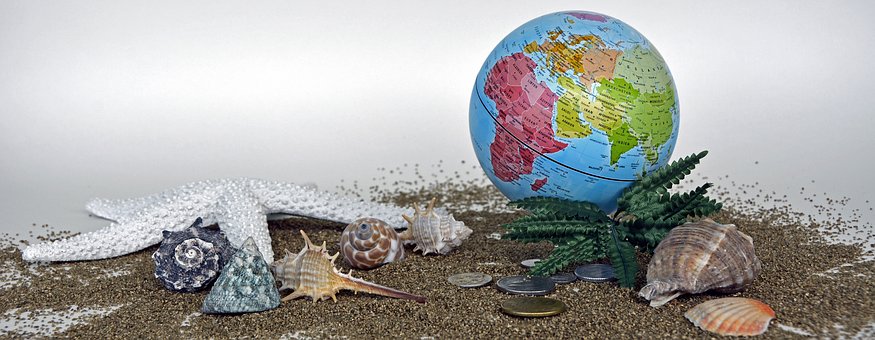Are Bioplastics Biodegradable?
It Sounds Like They Should Be, But What’s The Truth?
To understand the uniqueness of these two terms, let’s explore one at a time. Bioplastics are manufactured plastics, just like any other plastics. It’s what they are manufactured from that signifies the bio classification.  Examples of sources used to produce bioplastics include plants, vegetable fats and oils, corn starch, straw, sawdust, and woodchips, just to name a few. The items in this list of sources are natural resources - renewable resources. These are naturally replenished. Crops grow, they are harvested and can be converted into plastics. These are often referred to as first-generation bio-mass, organic material made by living organisms that contain stored energy from the sun.
Examples of sources used to produce bioplastics include plants, vegetable fats and oils, corn starch, straw, sawdust, and woodchips, just to name a few. The items in this list of sources are natural resources - renewable resources. These are naturally replenished. Crops grow, they are harvested and can be converted into plastics. These are often referred to as first-generation bio-mass, organic material made by living organisms that contain stored energy from the sun.

Waste and microorganisms are also bio-mass materials. Food waste, agricultural waste such as corn husks, and foresting are forms of non-edible bio-mass and is considered second-generation bio-mass.

Third-generation bio-mass refers to seaweed, cyanobacteria, and microalgae.
Generally, bio-mass, a natural resource, is used to produce bioplastics. To be clear, crude oil is a natural resource, but it is extracted, processed, and depleted. It does not return to the earth. It is not renewable, therefore, not a bio-based material.
One would think that if an item is made from bio-mass, it must be biodegradable. This would be a mistaken assumption. Bio-mass is processed or converted for use in making plastic, and the materials can be structured identically to the petroleum-based plastics. This means bioplastics can last in the environment as long as petroleum-based plastics. Coincidently, with similar chemical compositions, bioplastics can be recycled in the same recycling stream as petroleum-based plastics. It is important to know that if not similar in chemical structure, bioplastics can be detrimental, even harmful, to recycling in the petroleum-based plastic recycling stream.
So, what does it mean for an item to be classified as biodegradable? More frankly, what does biodegradable mean? As defined by Wikipedia (and many other sources) biodegradation is the breakdown of organic matter by microorganisms. Therefore, any organic matter that can be broken down by microorganisms is biodegradable. In general, the process is assumed to be of natural origin. This is important to note because this natural process is what differentiates biodegradation from composting. Whereas biodegradation is naturally occurring, composting is a human process guided by specific circumstances.
 Let’s get back to the biodegradation process. The first occurrence is a weakening of the structure, known as biodeterioration. After weakening, microorganisms breakdown the materials (digest) and this is known as biofragmentation. Finally, assimilation incorporates the old material into new cells. In reality, all materials are subject to biodegradation, but the amount of time necessary to achieve biodegradation varies widely. Think of it this way. A tomato falls from your vine to the ground and rots away rather quickly in comparison to leaving a glass jar in the same space. That glass jar will last centuries or longer, but over time it will be broken. Individual pieces will weaken and so on, but the time it will take to decompose in comparison to the tomato is significant. You get the picture.
Let’s get back to the biodegradation process. The first occurrence is a weakening of the structure, known as biodeterioration. After weakening, microorganisms breakdown the materials (digest) and this is known as biofragmentation. Finally, assimilation incorporates the old material into new cells. In reality, all materials are subject to biodegradation, but the amount of time necessary to achieve biodegradation varies widely. Think of it this way. A tomato falls from your vine to the ground and rots away rather quickly in comparison to leaving a glass jar in the same space. That glass jar will last centuries or longer, but over time it will be broken. Individual pieces will weaken and so on, but the time it will take to decompose in comparison to the tomato is significant. You get the picture.
During the biodeterioration stage light, temperatures, compression (termed as mechanical), and chemicals in the environment initiate the weakening of the structure. This topical degradation modifies the mechanical, physical, and chemical properties of the material – weakens the solid feature of the item.
 Oxygen plays a major role in the defragmentation process. Microorganisms through enzymes digest the degraded materials which break the polymeric bonds, that is, fragments the compounds. The compounds are essentially metabolized into a nutrient source, energy source, or become cell structural elements. The results of the biofragmentation are integrated into microbial cells. They are absorbed. This is the assimilation stage. In cellular biology these molecules are transported, that is passed through the membrane. A collection of mechanisms regulates this passage. A trait of biological membranes is selective membrane permeability. It means separation of substances of distinct chemicals naturally occurs. Once separated, various pathways lead to the production of various elements vital to sustaining the life of the host.
Oxygen plays a major role in the defragmentation process. Microorganisms through enzymes digest the degraded materials which break the polymeric bonds, that is, fragments the compounds. The compounds are essentially metabolized into a nutrient source, energy source, or become cell structural elements. The results of the biofragmentation are integrated into microbial cells. They are absorbed. This is the assimilation stage. In cellular biology these molecules are transported, that is passed through the membrane. A collection of mechanisms regulates this passage. A trait of biological membranes is selective membrane permeability. It means separation of substances of distinct chemicals naturally occurs. Once separated, various pathways lead to the production of various elements vital to sustaining the life of the host.
Now we know how biodegradation works. We also know specific conditions must be met for bioplastic to be biodegradable. And we are quickly learning how control is of utmost importance, control of materials used to make the bioplastic and to break them down. Scientist are discovering new avenues, such as the 2016 discovery in Japan that identified an enzyme capable of consuming PET, but still under development. As long as there are scientists to pursue solutions to waste mismanagement, we have hope.
In summary, biomass is created through biodegradation. This is a naturally occurring circular process, although human intervention (man-made landfills) can assist. Biomass is used to create bioplastics, however, when other elements – additives such as color agents, fillers, etc., - are blended into a biomass material, the additional elements may prevent them from being biodegradable. Still, just as petroleum based plastics can be engineered to be biodegradable, so can bioplastics. It just doesn’t happen naturally. Read more in our series on “The Planet” to learn about all things plastic!

